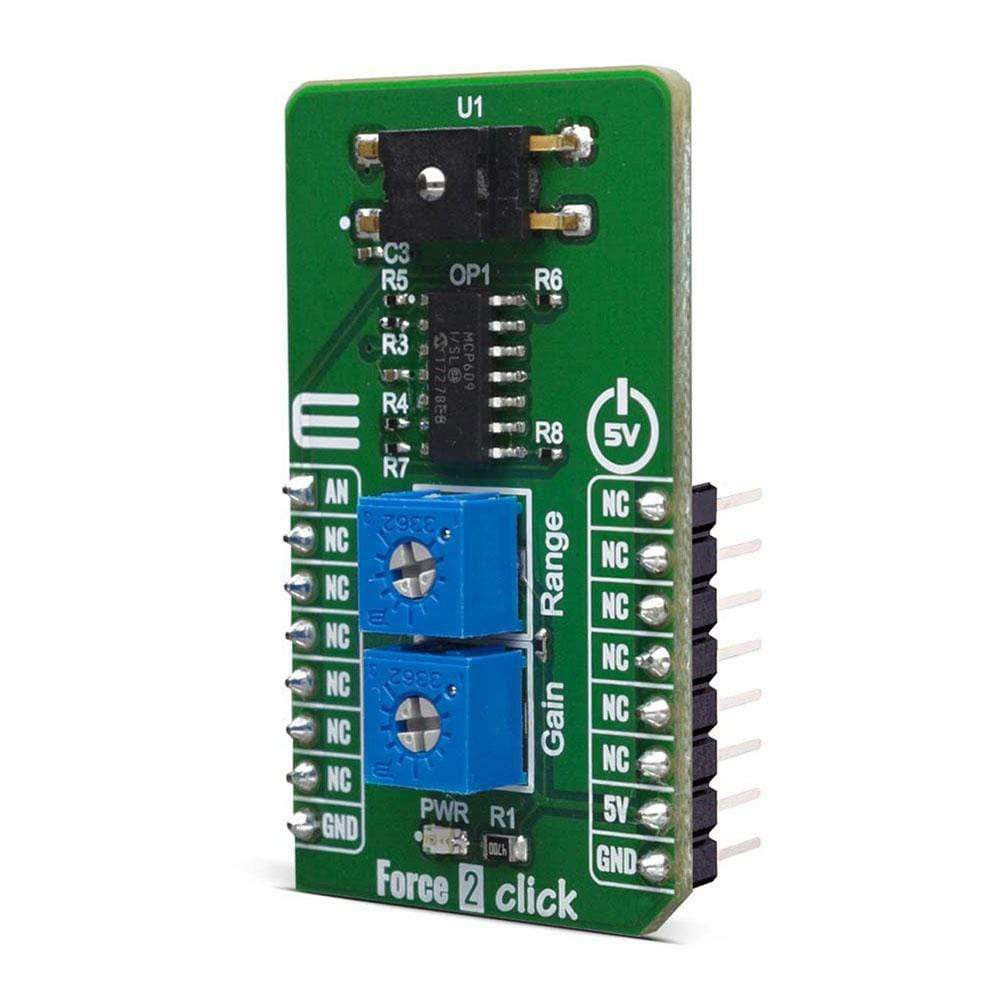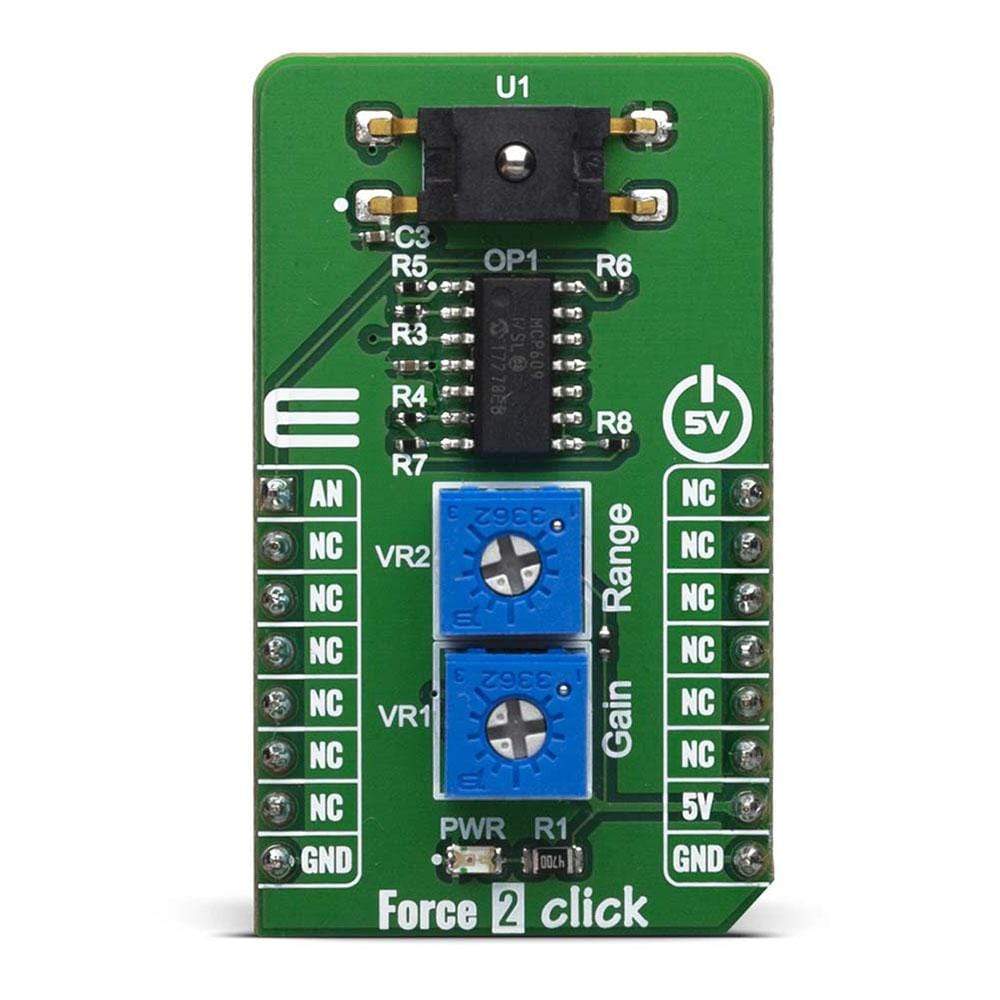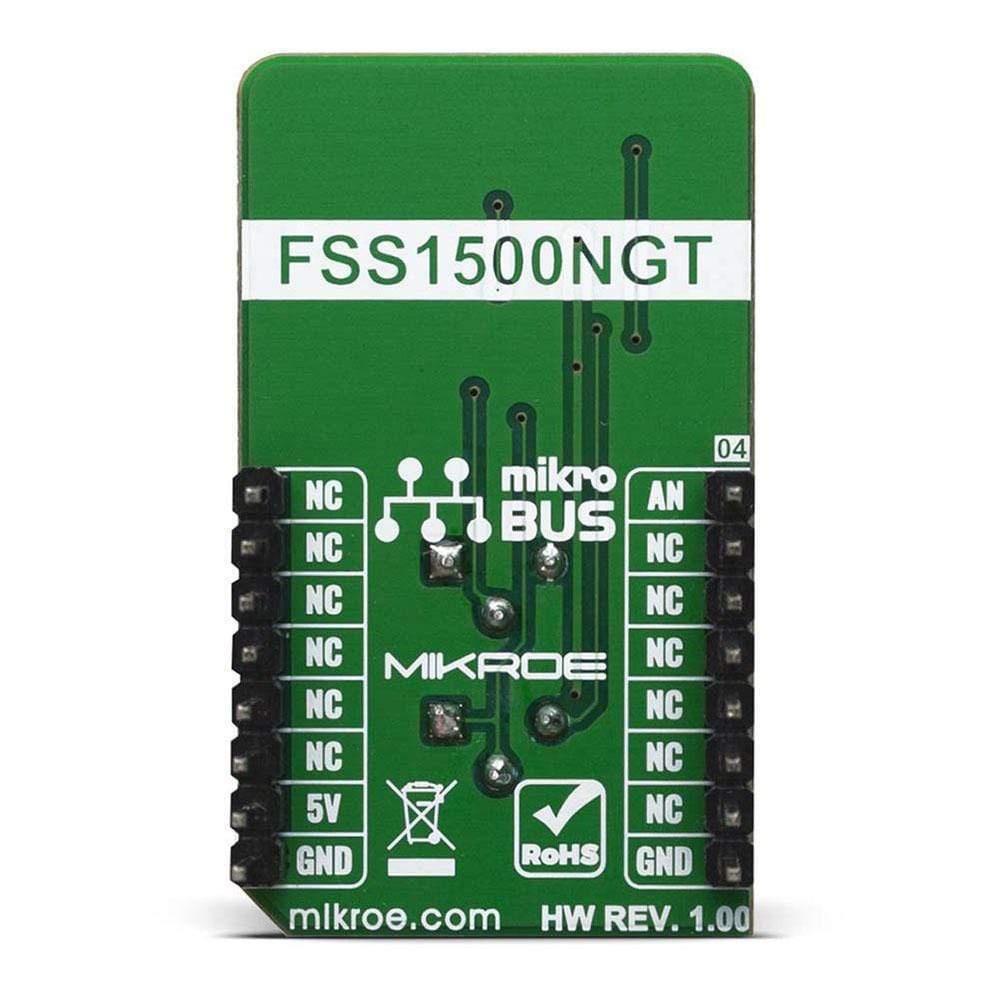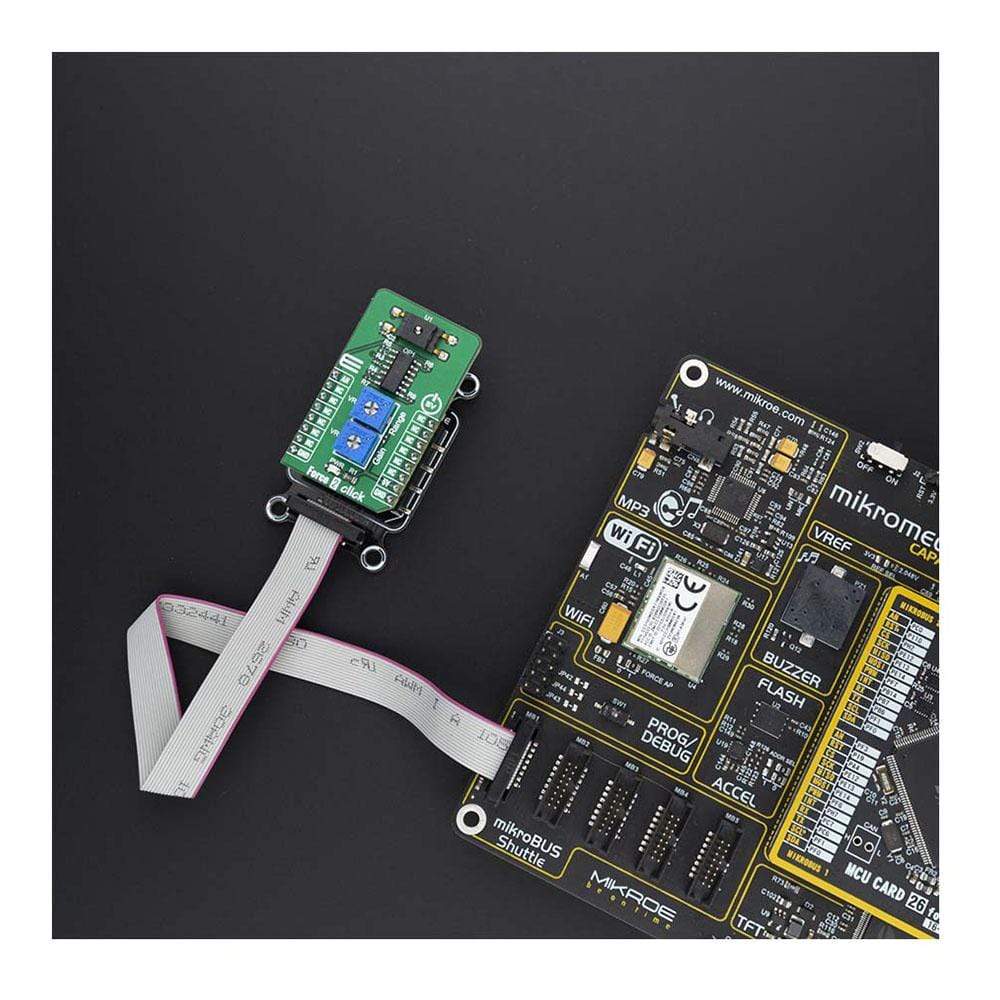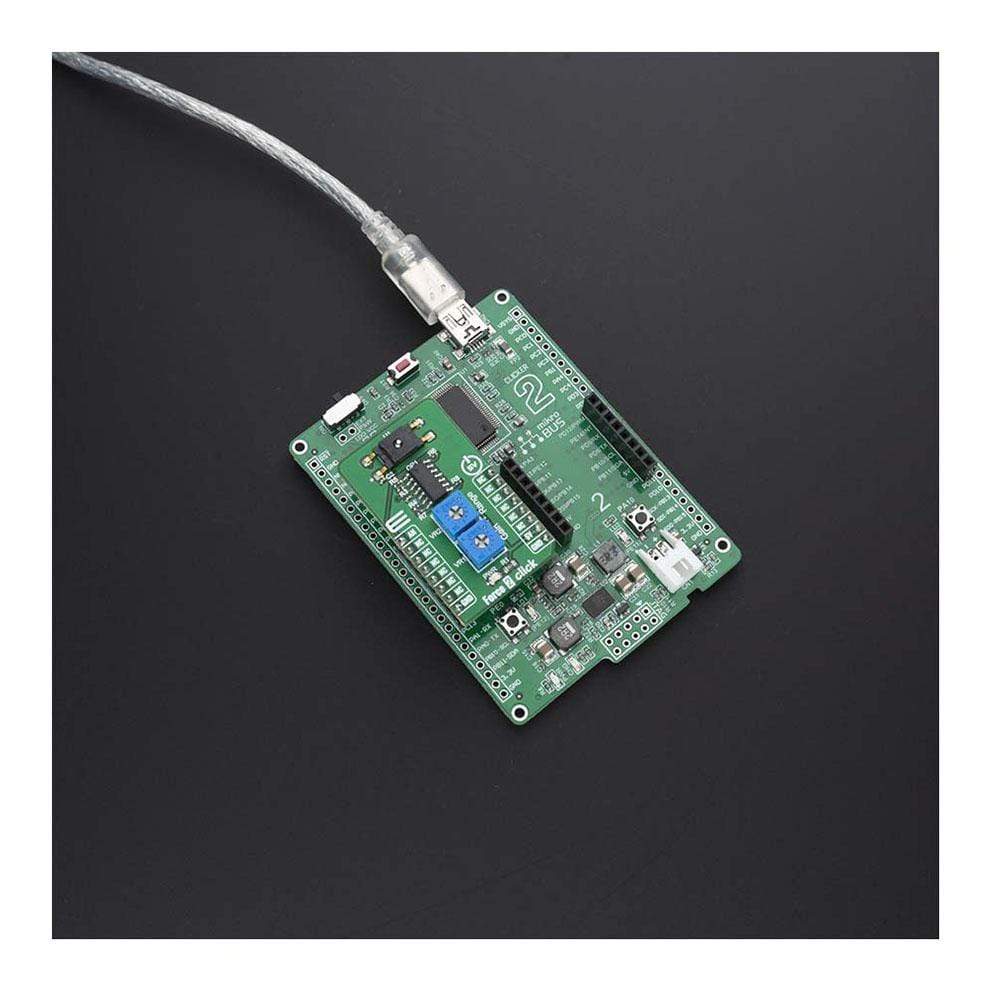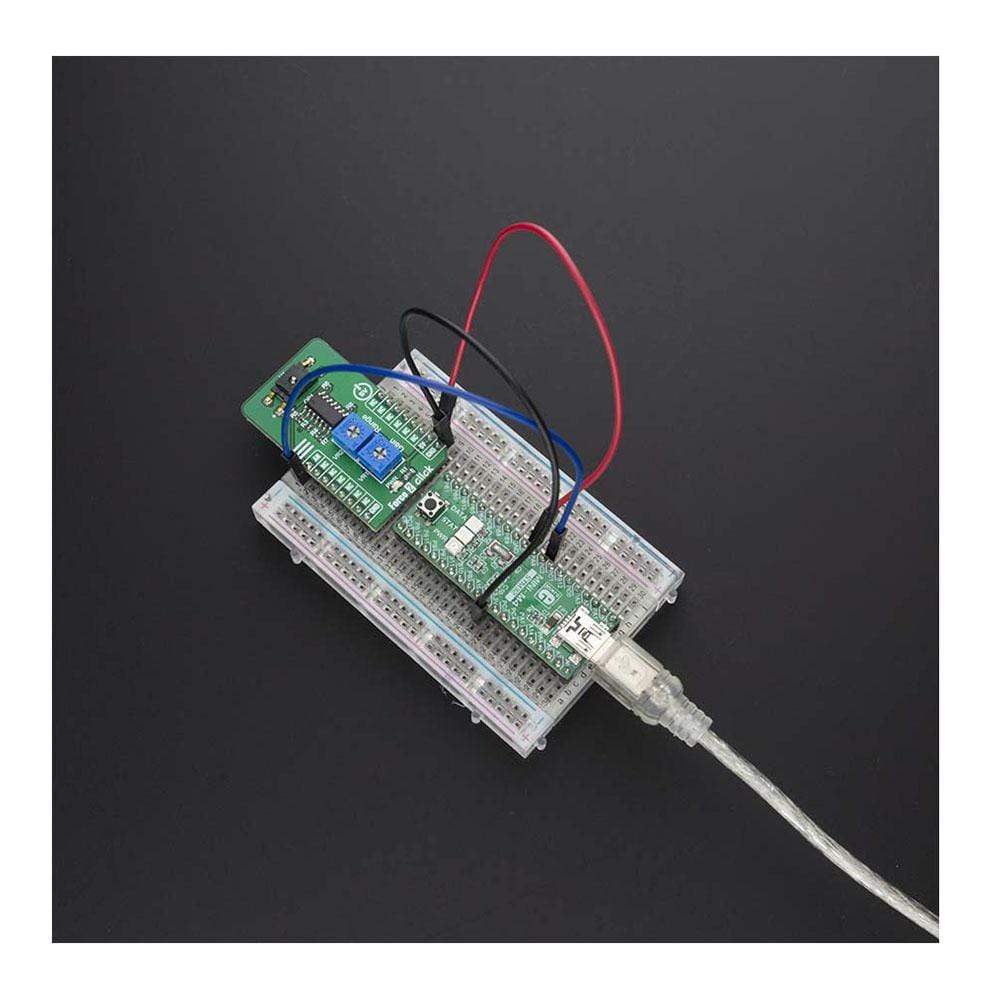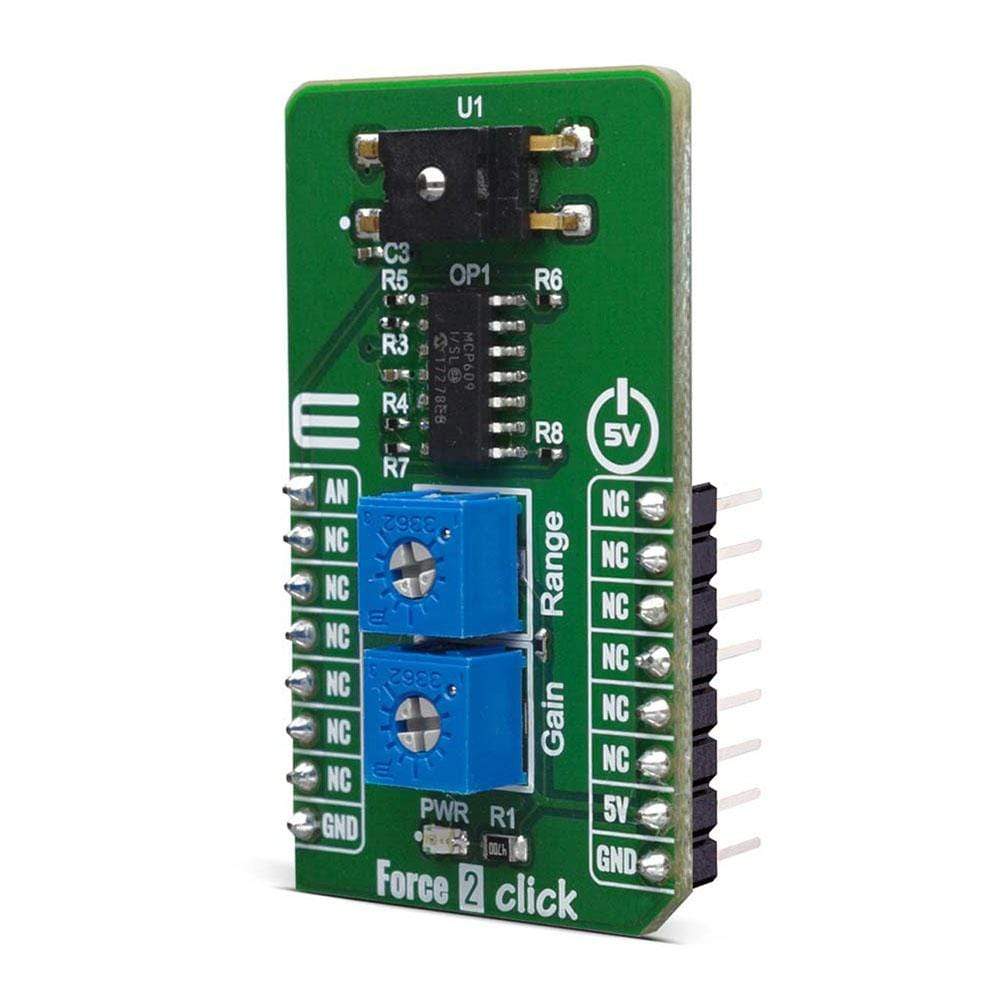
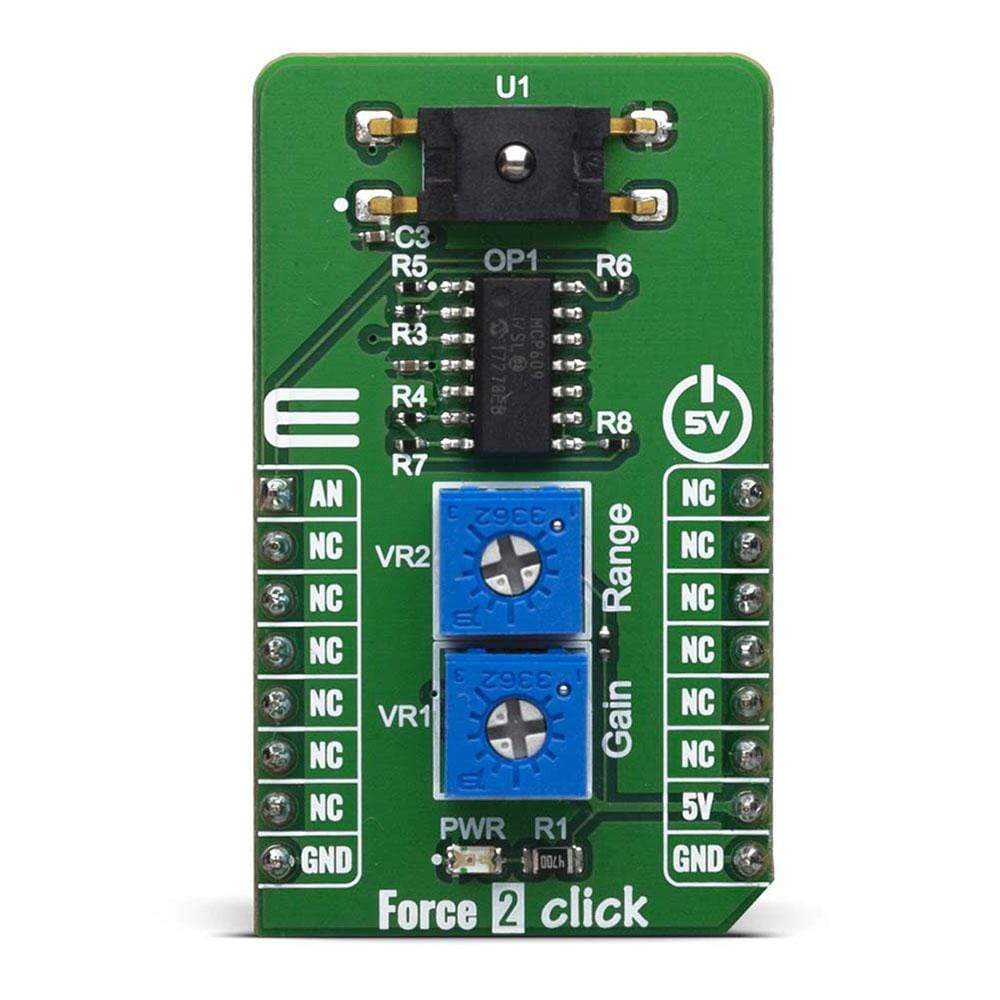
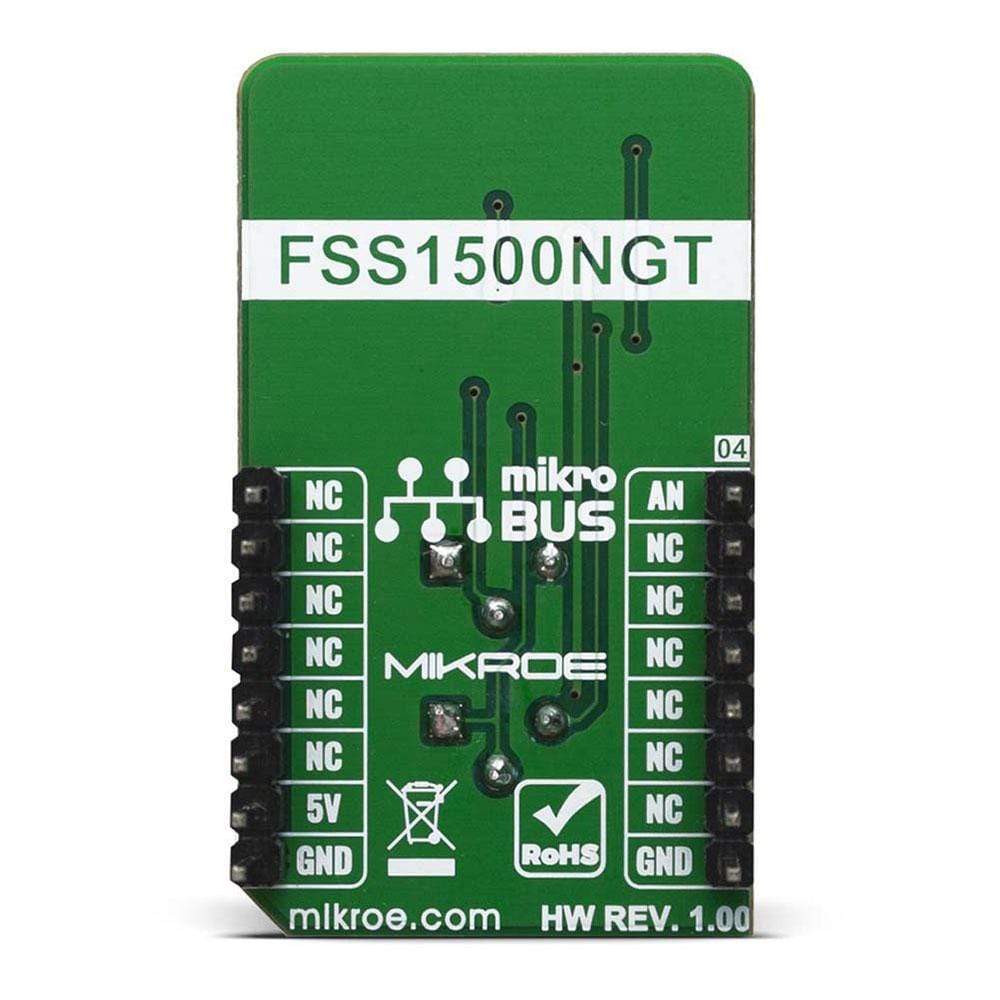
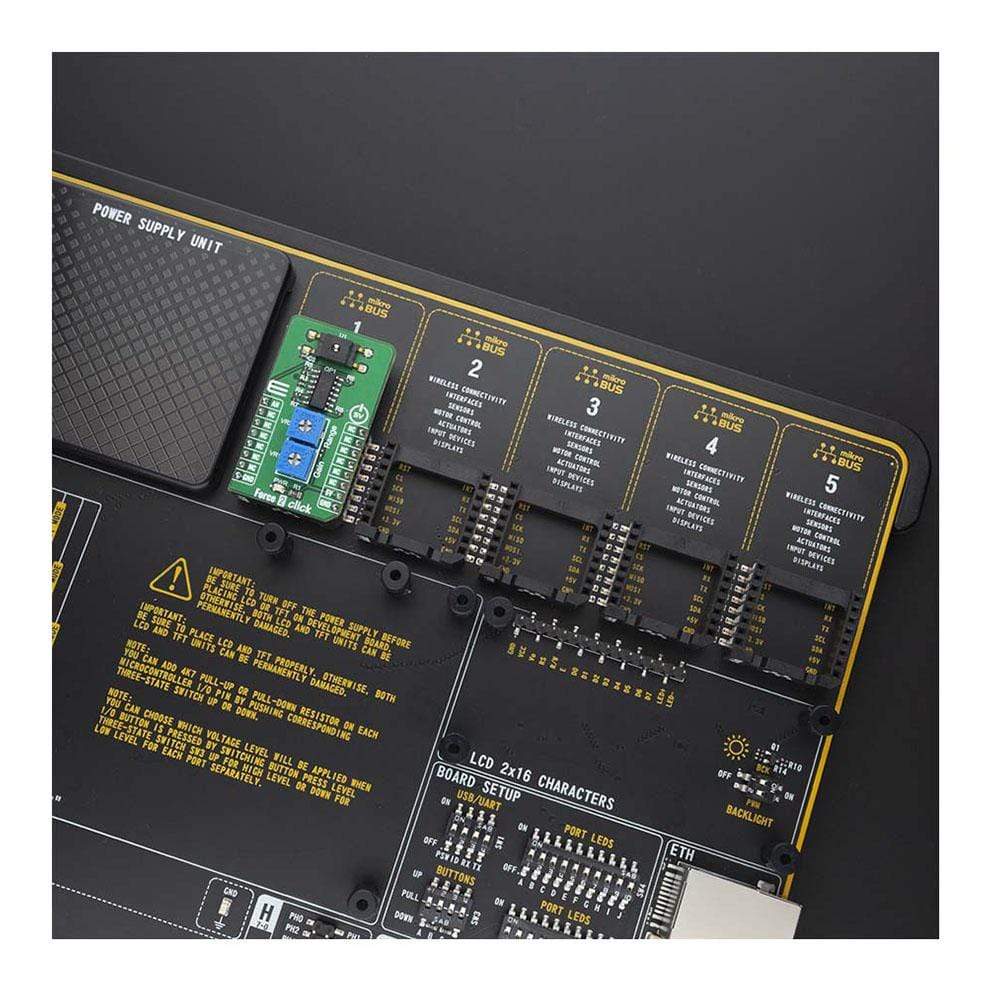
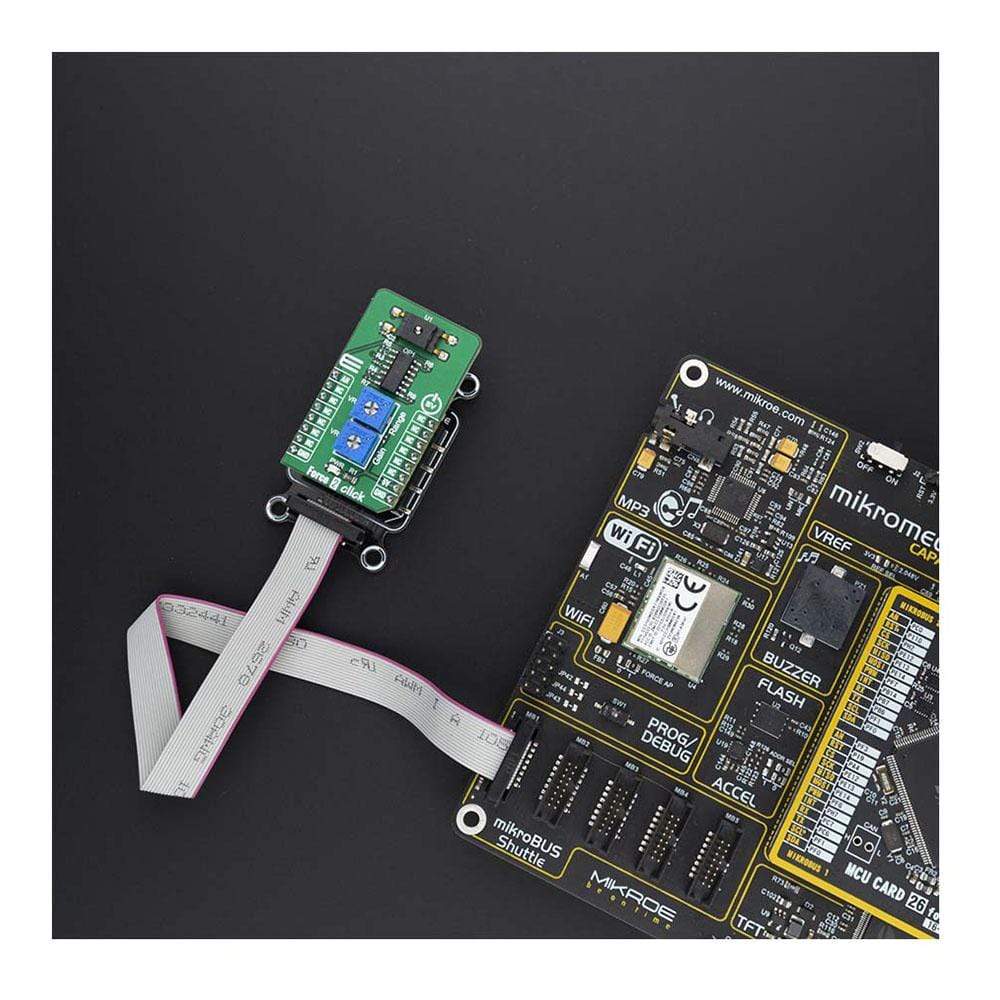
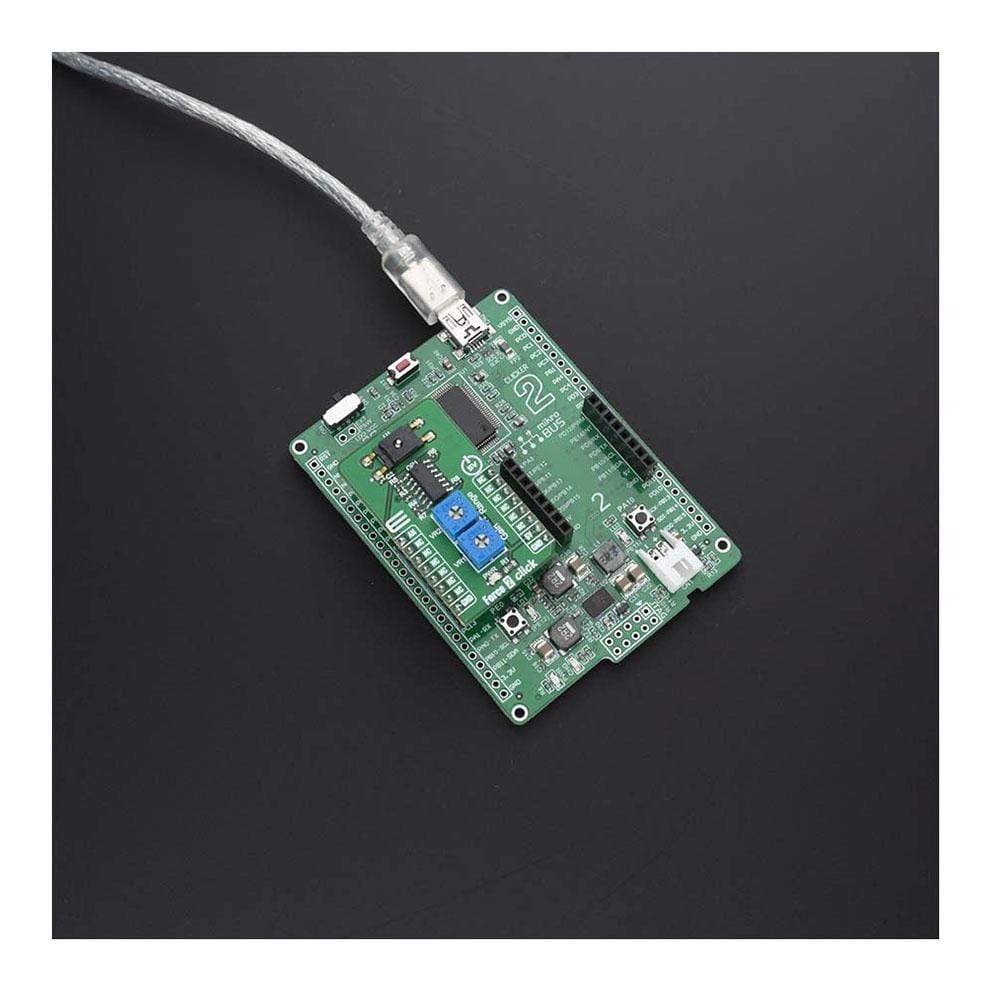
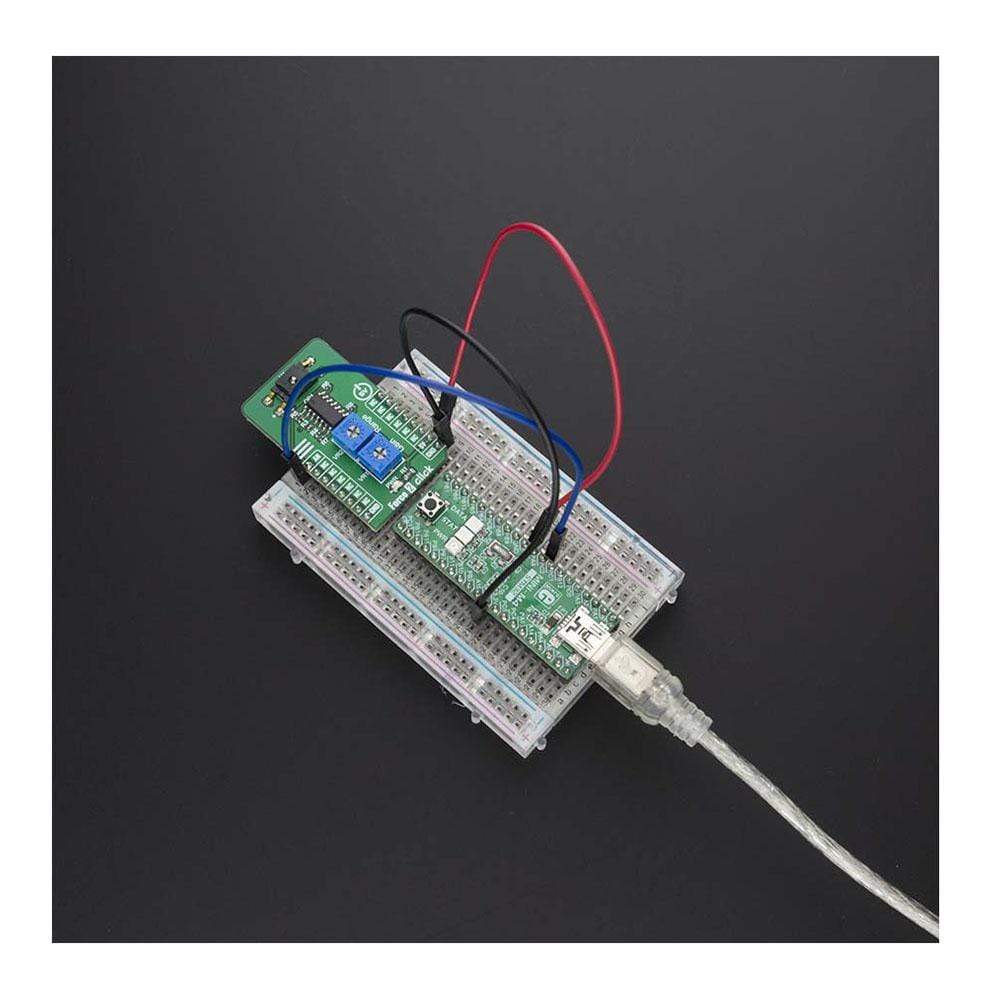
Overview
The Force 2 Click Board™ is a mikroBUS™ add-on board with circuitry for implementing Honeywell’s FSS1500NGT Series force sensors into your projects (with a single zone force-sensing resistor included with the click). This Click Board™ utilizes FSS1500NGT force sensor which is designed to be one of the most reliable force sensor available as illustrated by 20 million Mean Cycles to Failure (MCTF) at 25 °C [77 °F] rating. This low profile Surface Mount Technology (SMT) sensor allows for automated assembly on a printed circuit board, often helping the customer to reduce assembly costs while maintaining precise and reliable force sensing performance in a compact commercial-grade package.
The Force 2 Click Board™ is supported by a mikroSDK compliant library, which includes functions that simplify software development. This Click Board™ comes as a fully tested product, ready to be used on a system equipped with the mikroBUS™ socket.
Downloads
Das Force 2 Click Board™ ist eine mikroBUS™-Zusatzplatine mit Schaltkreisen zur Implementierung der Kraftsensoren der FSS1500NGT-Serie von Honeywell in Ihre Projekte (mit einem einzonigen Kraftsensorwiderstand im Lieferumfang des Click enthalten). Dieses Click Board™ verwendet den Kraftsensor FSS1500NGT, der als einer der zuverlässigsten Kraftsensoren auf dem Markt konzipiert ist, was durch 20 Millionen mittlere Zyklen bis zum Ausfall (MCTF) bei 25 °C [77 °F] belegt wird. Dieser flache Sensor mit Oberflächenmontagetechnologie (SMT) ermöglicht die automatische Montage auf einer Leiterplatte und hilft dem Kunden oft, die Montagekosten zu senken und gleichzeitig eine präzise und zuverlässige Kraftsensorleistung in einem kompakten, handelsüblichen Gehäuse beizubehalten.
Das Force 2 Click Board™ wird von einer mikroSDK-kompatiblen Bibliothek unterstützt, die Funktionen enthält, die die Softwareentwicklung vereinfachen. Dieses Click Board™ wird als vollständig getestetes Produkt geliefert und ist bereit für den Einsatz auf einem System, das mit der mikroBUS™-Buchse ausgestattet ist.
| General Information | |
|---|---|
Part Number (SKU) |
MIKROE-4046
|
Manufacturer |
|
| Physical and Mechanical | |
Weight |
0.019 kg
|
| Other | |
Country of Origin |
|
HS Code Customs Tariff code
|
|
EAN |
8606018717101
|
Warranty |
|
Frequently Asked Questions
Have a Question?
Be the first to ask a question about this.

